Editor’s note: This is the first installment in Spectrum South’s Historians of the Queer South series. Each month, we share a new article highlighting a scholar who we think has made a particularly important contribution to our understanding of the queer southern past.
By Nikita Shepard
You can tell that Jaime Harker loves her job.
I first learned about this scholar of the queer South through her brilliant 2018 study, The Lesbian South: Southern Feminists, the Women in Print Movement, and the Queer Literary Canon. When she’s recounting a tale from the adventurous, unapologetic southern lesbian literary cultures of the 1970s to 1990s that her book documents, her whole face lights up. Her buoyant enthusiasm shines through as she gestures avidly, grinning ear to ear, pumping her fist, moving around her chair with infectious energy.
Down in Oxford, Mississippi, she serves as a professor of English and the director of the Sarah Isom Center for Women and Gender Studies at the University of Mississippi. She’s the author of several books, teaches popular classes on literature, women’s studies, and LGBTQ topics, and helps organize programming and activist events in the area. And if you happen to be passing through Water Valley, Mississippi, on a Saturday, be sure to swing through the queer feminist bookstore that she co-founded in her town of not quite 4,000 people. I caught up with Dr. Harker via Zoom one sunny spring afternoon and fell into an enthusiastic dialogue that stretched longer than either of us had imagined, as I learned about the fascinating story of how a passionate group of lesbian writers and publishers sparked a southern feminist literary renaissance whose legacy is still with us today.
No one would have predicted that Jaime Harker’s life’s work would include reviving the forgotten legacies of lesbian life and writing in the South. At least, no one from the devoutly Mormon household in which she grew up on the West Coast. At her father’s insistence, she attended Brigham Young University in Provo, Utah, in the 1980s. “It was an understatement to say that it was not LGBTQ friendly,” she recalls. “You couldn’t be out, or you would be kicked out of school.”
Her first encounter with the queer South was an unexpected one. When she was in graduate school in 1989, her parents moved to Atlanta, and while strolling around the Little Five Points neighborhood on a visit, she and her mother wandered into Charis Books, the city’s stalwart queer feminist bookstore and community center, whose shelves brimmed with queer southern writers. Later, her parents unwittingly took her to the Flying Biscuit, a cafe that turned out to be lesbian-owned and chock full of friendly LGBTQ folks. “It was great,” she grins. “They loved it for the food, and I loved it ‘cuz it was filled with cute southern girls!” She was filled with a curiosity about this queer southern culture, so different from the stereotypes and assumptions she’d carried from the north and west about the region.
It made an impression. Years later, when she decided to take the position at the University of Mississippi and moved down to Oxford, she immersed herself in that queer southern world. It wasn’t easy at first, she recalls. In larger cities she’d lived in, there were lesbian or gay bars, community centers, cafes, film festivals—visible, public infrastructures that made it easy to plug into queer life. She couldn’t find these in her new home. But, as she learned, “It is there; you just have to find different entry points.”
She eventually found hers when a straight colleague introduced her to a lesbian student, who invited her to a private home where a large group of lesbians gathered every Saturday to watch football together. Once folks got to know her, she plugged into broader networks and settled into a fulfilling queer life with a southern twist. These networks “were not visible unless you knew people—probably out of necessity,” she observes. “People have to stick together.” While the area might not seem outwardly LGBTQ-friendly, once she knew where to look, she fell in love with the queer world she found in Mississippi. “It’s such a resilient, hilarious, really caring, sassy queer culture!”
The other entry point came through reading historians of the queer South, most notably John Howard, whose 1999 classic Men Like That: A Queer Southern History offers a groundbreaking portrait of gay Mississippi life. “It queered the whole landscape for me,” Harker recalls of the book. Her interest in the region’s LGBTQ history grew out of living and teaching here and observing the unique intimate worlds that queer folks created in the small-town South.
As she settled into her position, she began teaching a newly created gay and lesbian literature class. As the only course on an LGBTQ topic at Ole Miss at the time, queer students crowded into it. Delving deeper into queer literature, she noticed that Naiad Press, which during the late twentieth century was the largest lesbian feminist press in the world, had been based in Florida. Intrigued, she tracked down the press’s records in a San Francisco archive, which contained a treasure trove of queer southern literary history. Her curiosity was piqued . . . and seven years, several archive visits, and countless hours spent reading hundreds of novels later, Harker’s study The Lesbian South was born.
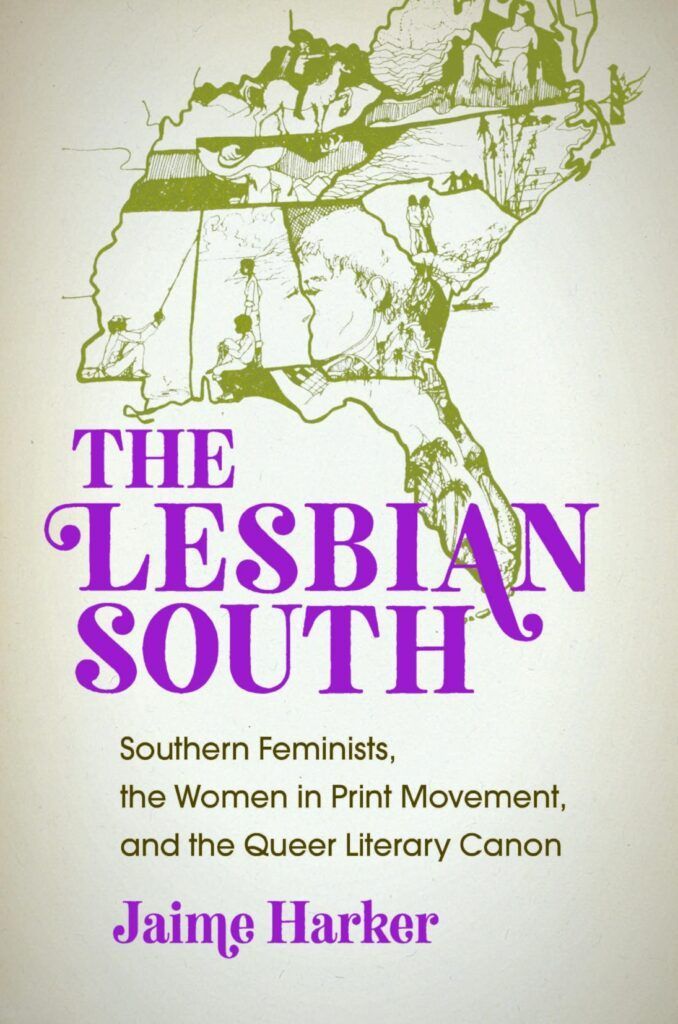
The book documents a remarkable generation of southern lesbian authors and publishers who participated in the Women in Print movement, a DIY feminist literary renaissance. In an era before the internet and social media, books and print magazines could be enormously influential in circulating radical ideas and creating countercultures, and lesbians in the South were determined to use the printed word to change the world. Their philosophy, Harker explains, was that “we’re not going to wait for mainstream culture to pay attention to us.” Instead, southern lesbians operating on a shoestring budget created their own presses from scratch, traveled the country to give readings and distribute new titles, and founded bookstores across the region to get their publications into women’s hands.
What strikes Harker most about the authors and publishers of this era is their energy and gusto, a spirit of defiant joy. Her eyes light up as she describes their philosophy: “We’re making a whole new world and we’re having the time of our lives.” Whereas gay male literature of the time made more inroads into New York City’s professional publishing world and tended toward aesthetics of melancholy and loss, lesbians didn’t trust the male editors and capitalist motivations of the industry, preferring to create and distribute writing from scratch. “It didn’t matter that they were hand-printing it themselves,” Harker explains. “They were convinced that they could remake the whole world with their words.”
Re-examining the South through the lens of this movement and its writers challenges conventional stereotypes about the region. Whereas many authors and critics invoke a South defined by conservatism, social conformity, racism, sexual prudery, and women’s subordination, the lesbian South that Harker uncovers could not possibly look more different. Instead, these women participated in radical, intersectional politics, unapologetically explored sex and desire, confronted gender roles, and rocked the boat in countless ways. While the southern lesbian writers were politically diverse, they frequently participated in radical activism, from Minnie Bruce Pratt’s membership in the Workers World Party to Mab Segrest’s anti-Ku Klux Klan organizing in rural North Carolina.
Their work also pushed sexual boundaries. Naiad Press published Pat Califia’s Sapphistries, a sex manual controversial within the “lesbian sex wars” of the 1980s for its open discussions of kink and sadomasochism. The novel Lover by modernist Bertha Harris—who defined lesbian feminism as first and foremost about the American women’s orgasm—was rejected by a mainstream publisher as being too pornographic, so it was published by the small lesbian press Daughter’s, Inc. Harker gleefully recounts her students’ reactions to reading the strikingly horny opening chapter to Ann Shockley’s 1987 novel Say Jesus and Come to Me, in which a Black female preacher seduces another woman in the congregation through her impassioned preaching. “There were open discussions of sexual practices,” she emphasizes. “Southern lesbians were not having this tiptoeing around it.”
This doesn’t sound much like the stereotypical notion of 1970s “lesbian feminism” as many remember it today. Harker remembers back in the 1990s thinking of lesbian feminism as moralistic, rigid, and out of date. But as she delved into the southern lesbians of the Women in Print movement, she came to realize that it was “always more unruly than that”; following a different genealogy through the sisters who were living, loving, and writing in the South shows a different side to the lesbian feminist past.
Her account also complicates some of the ways even the queer South has been portrayed. While historian John Howard portrayed gay Mississippi as a place where alternative sexuality might be “known, but not discussed,” the lesbians active in the Women in Print movement were “something else altogether,” she insists. “They were out. They said, ‘We’re lesbian, radical, and southern. We’re not fitting in or being quiet.’”
The writing published by southern lesbians during this period spanned many genres. Harker is fascinated with how we divide up fiction into “highbrow” or “lowbrow”—though her students these days don’t care about such distinctions. The Women in Print movement included avant-garde and modernist writings, “consciousness-raising novels” tracing a character’s journey coming out as a feminist, as well as plenty of genre fiction—romance, mystery, sci-fi, and so forth—which proved very popular, despite being looked down upon as “trashy” by some. Harker has favorites but appreciates it all: “I don’t know that there’s a queer or lesbian aesthetic, but I’m really interested in what happens when you believe that there is.” Lesbian critics never agreed, but all debated literature passionately, since they believed that “books could save your life and change the world.”
In addition to their networks of publishers and bookstores in southern cities, the movement also drew on rural communes where women lived together collectively. The “landyke” movement offered an alternative vision of life, work, and relationships, and a network of such communes—some of which exist across the region to this day—helped to nourish the writers and publishers of the lesbian South. “It’s easy to see many of these as failures,” she concedes, since most participants hadn’t grown up on the land and couldn’t sustain them long-term. But, she insists, “It was what it freed in their minds that mattered most.”
Lesbian spaces weren’t limited to bars, bookstores, and communes. Harker’s book also considers in-between areas that she calls “queer contact zones,” spaces outside of a culture’s regular hierarchies. These seem particularly important in the South; where she lives in Mississippi, for example, “there’s rarely a gay bar, but if you know where to look, certain places at certain times of night might be reclaimed, remapped as queer spaces.” She’s fascinated with watching those encounters as they play out.
She shares a story of when lesbian author Minnie Bruce Pratt came to Oxford for a reading. After the event, Harker joined Pratt and a gaggle of local lesbians at a local restaurant. As Pratt warmed to her audience, she began to tell raunchy stories about kinky lesbian sex—to the delight of her fellow lesbian diners and to the dismay of many at the nearby tables! “We emptied that place out by the end of the night,” Harker chuckles. “We looked around, and it was just us left!” That night was emblematic, she reflected, of that reclaiming of queer space, however temporary, that serves such an important role in the LGBTQ South.
Many of these southern lesbian writers are still resonant with queer readers today. Harker knows, because her classes at the University of Mississippi continue to fill up with students who eagerly devour the books she assigns. Dorothy Allison’s stories and essays in Trash and Skin remain searing and relatable. Minnie Bruce Pratt’s poetic memoir Crime Against Nature retains its striking emotional power. Sheila Ortiz-Taylor’s Outrageous plays with southern tropes in provocative, still contemporary ways. These books and authors remain classics for young queer southern readers today, Harker argues, because “they give visions of southern life no one has articulated for them. They don’t know there are these famous communes of landykes or these amazing presses of lesbian literature; they haven’t encountered these ways of reimagining and reclaiming the region.”
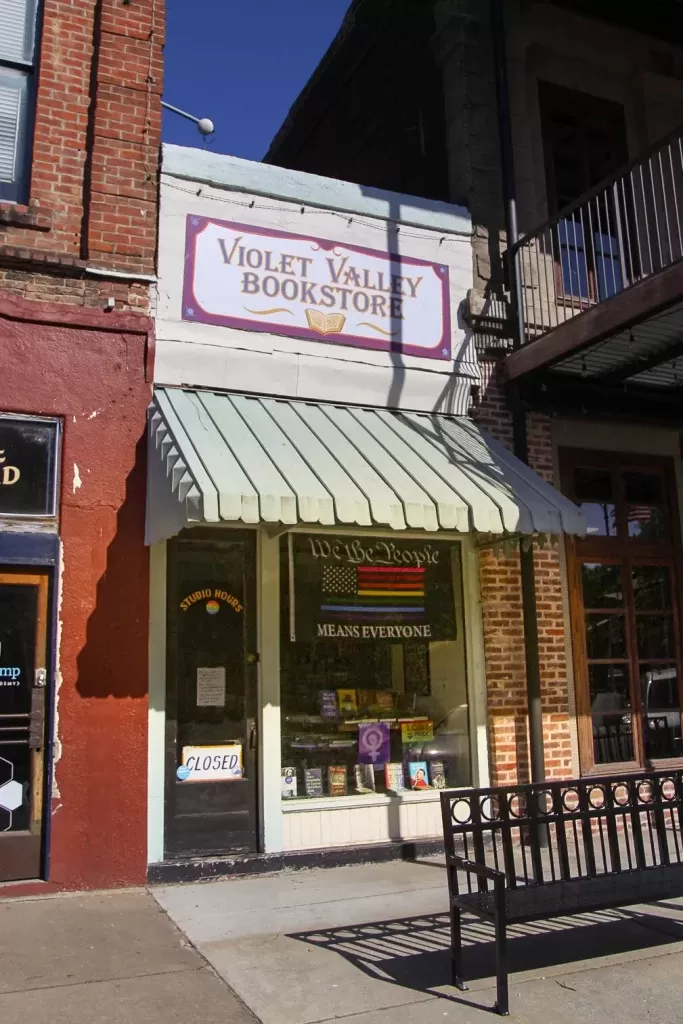
She gives the example of teaching Fried Green Tomatoes—the book, not the movie. (Did you know it’s a queer southern novel by a lesbian novelist? I sure didn’t before reading Harker’s book.) “I’ll take a trope, like this notion that ‘every small southern town has its town queer,’” she explains. “My students laugh, but then they start thinking about it, and they recognize these tropes that speak to experiences that no one had named. It gives them a lens to see the queer South in a new way.”
She smiles, then elaborates: “It’s a way of claiming queer joy in a space where they’re told it’s not possible.” I can’t think of a better way to express why this literary legacy of the lesbian South matters today—perhaps more than ever.
When I asked what she’s working on now, Harker’s eyes light up again. “My next project is looking at lesbian writing in the twenty-first century,” she confides. Sapph-fic will explore the experience of queer women writing and reading today in an age of abundance rather than scarcity; whereas the lesbians of the Women in Print movement had to fight an uphill battle to print and circulate their work, today “lesfic” online offers tens of thousands of options in every conceivable genre at the click of a button.
The new book will also draw on her experiences running Violet Valley, a small queer feminist bookstore in Water Valley, Mississippi. Inspired by the determined DIY ethos of the southern lesbians of the Women in Print movement, she realized as she was wrapping up her research: “Hey, if they could do it back then, so can I!” In 2017, I wrote an article on the vanishing queer southern bookstore—but I’m happy to report that a new one has appeared, and seems to be thriving. It’s only open one day per week—given how many other things Harker has on her plate, I’m amazed it’s open that often—but it fills a vital role, creating a visible public queer and feminist space in a region where precious few such resources exist.
And through her bookstore, her scholarship, and her teaching, the southern lesbian literary renaissance of the 1970s–90s lives on. The determined women of that movement, Harker explains, believed that you had to “reinvent the world the way you want it to be—to imagine the thing you want to see, then create it.”
That’s a lesson that a new generation of queer southerners can take inspiration from today.
Want to read The Lesbian South? Purchase a copy through ShopQueer.co, and the author will receive double the income they usually would. Spectrum South also receives a 10% referral commission when our readers shop through this link. Queer readers support queer writers!


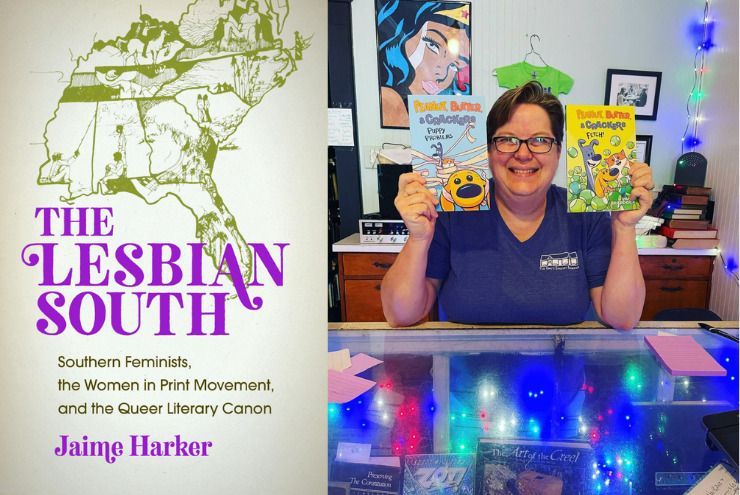
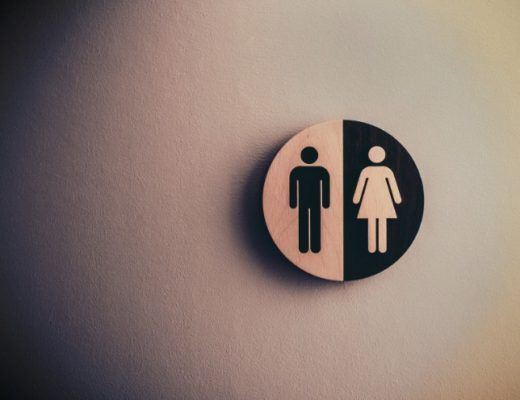
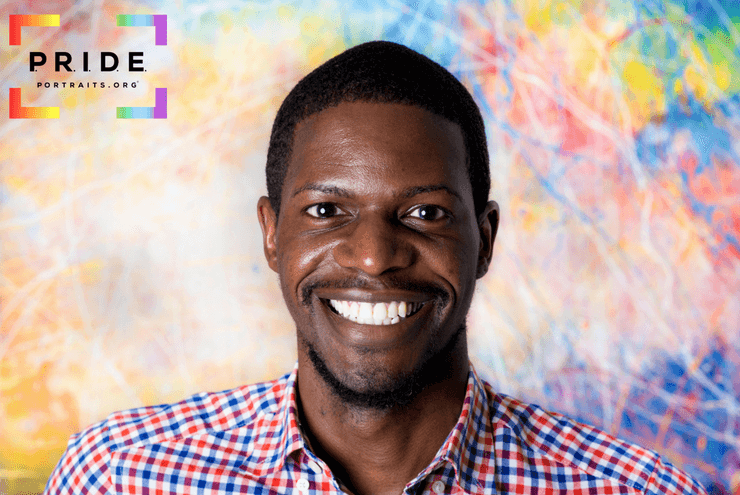
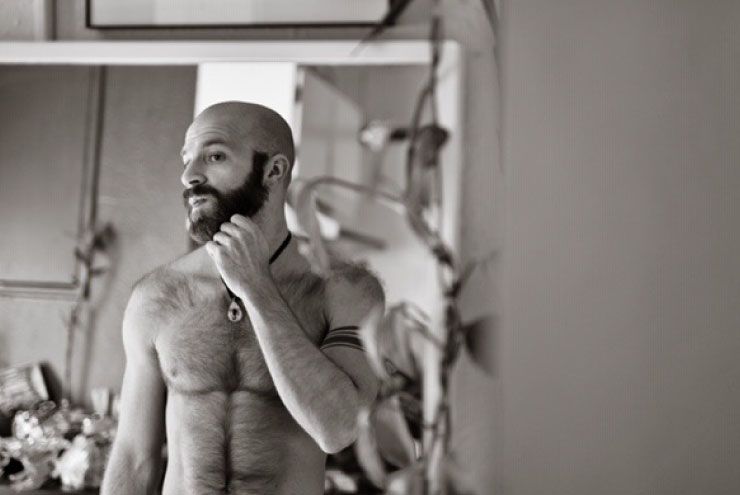


Historians of the Queer South: Announcing a New Spectrum South Series
June 23, 2023 at 10:38 AM[…] Jaime Harker’s Lesbian Literary Renaissance (June 12, 2023) […]